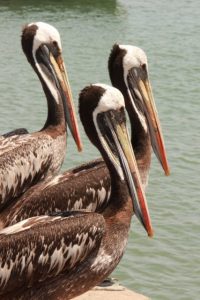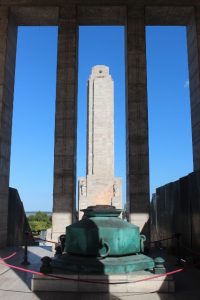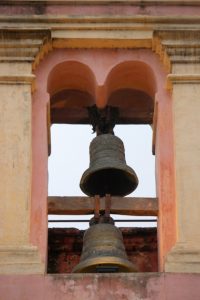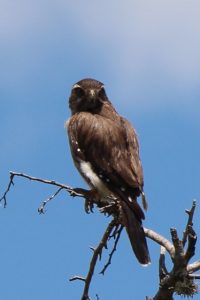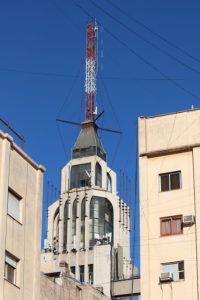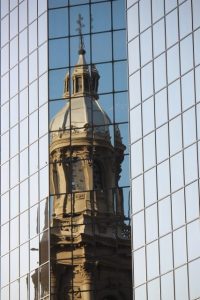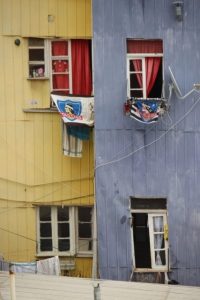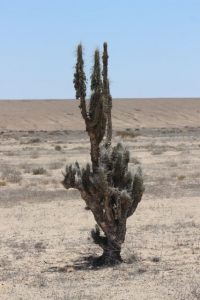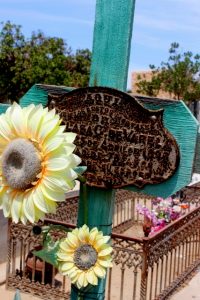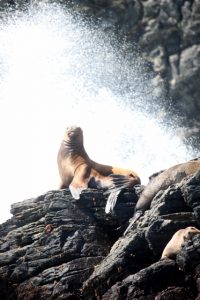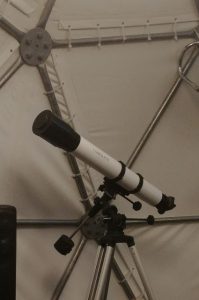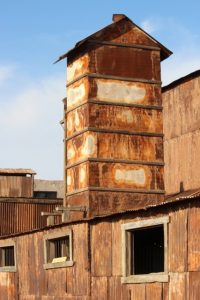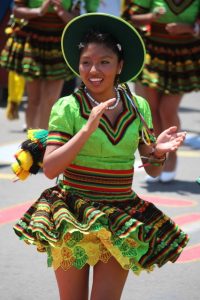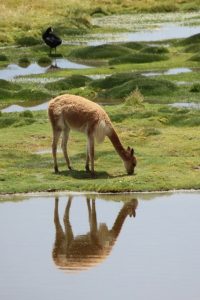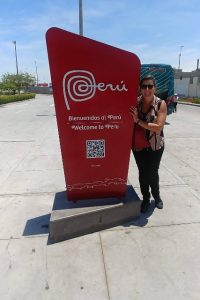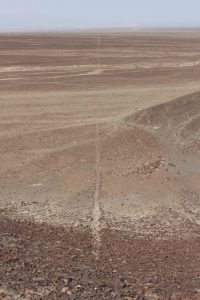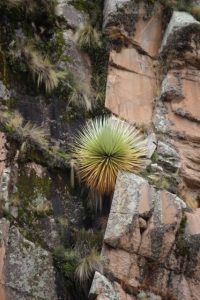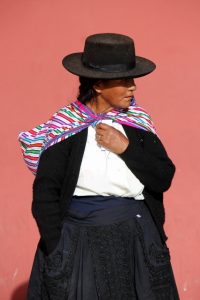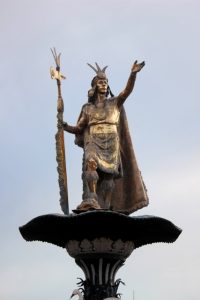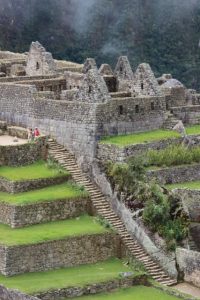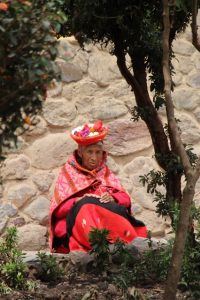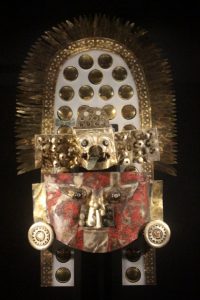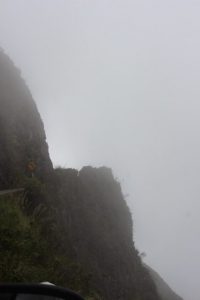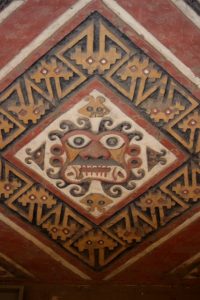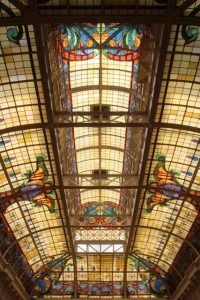Early 2019 we traveled from Buenos Aires west, and across the Andes to Santiago in Chile, and from there north into Peru. Most of the journey was along the Latin American Pacific Coast, with excursions up into the Andes, to Cusco and Machu Picchu and into the Amazonas region. We spent about two weeks traveling in Argentina, four in Chile and almost eight in Peru, enjoying the coast, the desert and the high Andean peaks, as well as carnaval, colonial cities and pre-columbian archaeological sites, from Inca as well as much older cultures. A fabulous trip, even though the weather was not always the most favourable.
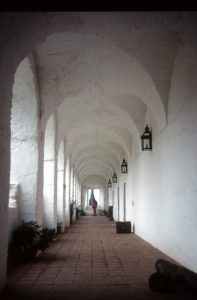 01. the Chile and Peru plan: It is that time of the year again, the winter in Europe is around the corner, time to escape for a while. This time, we have selected South America as our travel target.
01. the Chile and Peru plan: It is that time of the year again, the winter in Europe is around the corner, time to escape for a while. This time, we have selected South America as our travel target.
With one of us being Argentinian, we do go to South America regularly. But hitherto we hardly ever featured outside Argentina on these trips, as family and friends require the necessary attention. So we haven’t managed much more outside Argentina than a long weekend Uruguay. Time to adjust the approach. Instead of a couple of weeks, we have reserved no less than four months for our next adventure
02. Lujan: In Lujan, a typical Argentinian small town, we reconnect with Argentina. And there are even some touristic highlights, a basilic and a colonial museum.
Lujan, a small town in the northern part of Province de Buenos Aires, would not normally be an entry in this blog. There is little to do, and being close to Buenos Aires, the Argentine capital, the latter would be a more logical place to start our South American journey. Except that Lujan is where my mother-in-law lives.
03. Buenos Aires: I can’t get enough of Buenos Aires, Argentina’s scintillating capital city.
Three weeks from home, and we haven’t even left Buenos Aires yet! Buenos Aires is another one of those places that don’t really belong in this blog, it is not that we are discovering anything new here. Buenos Aires to us is a bit like London, or Amsterdam, a big city we like, and we have history with. One of us has lived a big part of her childhood here, the other has been coming back to this fascinating metropole for almost 30 years now, always insisting on at least 1 or 2 days sightseeing – even if that meant revisiting the same places over and over.
04. Rosario: Rosario doesn’t seem to offer much, untill we discover the early 20th Century architecture.
With Christmas, New Year and several birthdays behind us, celebrated in various combinations of family and friends, it is time to start traveling properly. We need to cross the Argentinian pampas in western direction, to ultimately arrive at Mendoza, from where we intend to cross the Andes to Chili. As it is a minimum of 1100 km to Mendoza, we have introduced some stops on the way (which are, to be fair, not entirely devoid of family and friends, too). We get on to a bus to Rosario, Argentina’s third largest city, four hours away from Buenos Aires.
05. Cordoba: Wonderful historical Cordoba; but it is miserable weather, so we move on quickly.
So far the weather has served us well, but in Cordoba, Argentina’s second largest city, it rains. And it will continue to rain, according to the weather forecast. Which is a pity, because Cordoba does have a number of ancient buildings to admire, as one of the Jesuit centres established at the very end of the 16th Century, and as one of the oldest colonial settlements in the vice-royalty of Rio de la Plata.
06. the Sierras: The Sierras de Cordoba, popular holiday spot for Argentines, has a lot to offer, from walks to hippy markets – and dense fog spoiling the view.
One of the prime tourist areas of Argentina is the Sierras de Cordoba, a range of hills stretching from nearby Carlos Paz to Villa Dolores, almost three hours drive from the city of Cordoba itself. Many self-respecting Argentinians have a little holiday home here, which they occupy part of the year themselves and rent out otherwise; many others have settled permanently, attracted by the overall pleasant temperatures – an important element in the daily conversation of this country – and relaxed way of live, which we would have called hippy-esque in another era.
07. the wineries: Unexpectedly, we find a number of young wineries in the Sierras de Cordoba, although many of them may still have some way to go to maturity; enthusiasm compensates.
Over the past decades Argentine wine has built up an enviable reputation – although a certain amount of personal bias may well be influencing this statement somewhat. Where in the past quantity was the norm, wineries started to focus on quality, perhaps some 20 years ago, and the results are impressive. more and more individual producers, ever increasing varieties, and especially, better and better wines. All from the foothills of the Andes, mostly Mendoza and San Juan. Or so I thought.
08. Mendoza: Compared to the other Argentine cities we have been to this trip, Mendoza, the country’s fourth largest city, is disappointing and dirty.
Mendoza is one of the oldest cities in Argentina, yet, it doesn’t show. There are just not a lot of attractive old buildings around; what didn’t help, of course, was the 1861 earthquake, that destroyed much of the city, including the only one historical site left, another Jesuit convent called San Francisco. Which is just not very impressive anymore. But where Rosario and Cordoba, and Buenos Aires too, have lots of beautiful early 20th Century architecture, Mendoza seems to lack the grandeur of this era.
09. the wineries (2): Visiting the wineries in Mendoza, Argentina’s prime wine region, can be an expensive excercise, but with a bit of creativety we managed to organise out own wonderful trip – except for the quality of the wine.
Of course, we didn’t come to Mendoza to admire the beautiful city. It isn’t that beautiful, and we knew it. We came here in order to hop across the Andes, to start the Chile part of our travels. But whilst we are here, we might as well visit some of the wineries for which the Mendoza area is rightfully famous.
10. the crossing: Crossing the Andes is an experience, in terms of spectacular mountain views, but also the customs procedure for bus passengers.
It is time to leave Argentina behind, at least for the time being. From Mendoza it is a five-hour bus ride to Santiago, Chile’s capital city. Plus whatever it takes to cross the border. The road takes us up the Andes on one side, and down the other, over the Paso Internacional Los Libertadores, a reference to the campaign of General San Martin in 1817, who scaled the pass with a sizable army of 4000, thereby totally surprising the Spanish on the other side – but also losing a third of his men during the crossing. These days the border, having been defined along the watershed and the highest peaks, is much lower, at around 3200 m, in the middle of a 3 km tunnel.
11. Santiago: Chile’s capital Santiago has a lot to offer, from architecture and museums to excellent food and a lively center.
Coming from Argentina, we expect Santiago to be kind of similar to the Argentine cities we have seen this trip. And yes, a central Plaza – Plaza de Armas -, surrounded by a cabildo – the old municipality – and a cathedral, and a wide avenue named after the local hero liberator, in this case Bernardo O’Higgins. A grid of one-way streets alternating direction, a pedestrian-only street in the town centre, a couple of early 20th Century buildings like a museum and a theatre, and a railway station or two. Ugly graffiti spoiling a lot of houses at ground level: all very much like a standard Argentine city. We even find an extreme left-wing restaurant, where earlier anti-government complots during the Pinochet years were hatched.
12. Valparaiso: Despite its reputation, Valparaiso is one of the most charming cities we have come across, ever, with its ascensores and its corrugated iron houses, its colours and its atmosphere.
Valparaiso is filthy. It looks abandoned, much of it poorly maintained. And it stinks. Pee. Almost everywhere. Everybody must just pee in the open, although somehow we don’t see it happening. But we do smell the result. And I suppose with so little rain it just doesn’t wash away.
Valparaiso is also infuriating. Maps are, by definition, two-dimensional, and the ones we have are not very good, in any case. But really, you need a three-dimensional model to find your way, because except for a narrow coastal strip, Valpo, as the town is known, is built against a steep slope.
13. Vina del Mar: There is not much to keep us long in overdeveloped beach resort Vina del Mar, except for the excellent Fonck Museum.
Less than 10 km north of Valparaiso is Vina del Mar, Chile’s foremost beach resort. Not very much interested in beach resorts, we nevertheless decide to check it out, and in twenty minutes with the metro train we arrive in the centre of town. A rather different affair from Valparaiso, much better organised, much cleaner, much less graffiti. And no character to speak of.
14. La Serena: La Serena is both humble old town, full of churches, and gaudy beach resort, but without the tourists, yet it benefits from several interesting sites in nearby Coquimbo and Tongoy.
We have turned decisively north. After traveling essentially west for the past weeks, from Buenos Aires all the way to Valparaiso – and after a small detour south, to visit an old friend in Rancagua, just south of Santiago -, we now head north, along the Pacific coast: the main objective of our journey.
First stop is La Serena, five hours by bus.
15. Tierra Amarillia: In order to cross the Andes, we move to Tierra Amarillia, a small village below the Pircas Negras Pass. On the way, mostly desert, mining and some surprising flora
As I said earlier, the plan is to move ever further north, in between the Pacific coast and the Andes. However, somewhere along we have picked up the idea to cross the Andes a few times, in a loop, once back into Argentina and then again into Chile. Crossing the Andes is fun: high mountain passes, surrounded by even higher peaks, spectacular landscape, you name it.
16. the border: Despite a set-back, we drive up the increasingly scenic Paso San Francisco, on the way to Argentina, only to experience the next set-back.
Our luck seems to be running out. We will have to shelf the idea of crossing the Pircas Negras Pass – a pass which is only open in (Southern Hemisphere) summer -, because of bad weather. In summer!
But there is another pass, Paso San Francisco, a little further north. It means a longer drive on the Argentinian side to return to La Serena, but at least we can complete the idea of a clockwise loop. And this pass is open, according to the carabineros, who add that we need to be at the border by one o’clock latest, afterwards they don’t let anybody through anymore. The two border controls, Chilean and Argentinian, are about one-and-a-half hour’s drive apart, one on each side of the pass.
17. Copiapo: Instead of small-town Copiapo, we check out the cemetry of Caldera and the beaches in the neighbourhood, which don’t disappoint.
Back from our failed border crossing attempt we establish ourselves in Copiapo, quintessentially small town Chile: mostly low, single story houses in centre, not particularly attractive, but quite atmospheric. Our luck hasn’t restored itself yet. On top of permit problems of yesterday the car also has developed a problem, so we contact the rental agency, waist another morning, and finally get a new car. The only one available is a camionetta, a pick-up truck like the ones we have seen the miners use in the previous days. But who cares?
18. the island: A day full of wildlife on the island of Chanaral, part of the National Reserve Pinguino de Humboldt.
Because we had to abort our plan to loop across the Andes back to La Serena, we now have to backtrack, to return our rented car. It is prohibitively expensive in Chile to drop off the car in another place than where you have rented it. And in any case, we still have some unfinished business there.
19. Vicuna and the Elqui Valley: Convenient and pleasant Vicuna is a good base for an excursion into the rather hippy-esque, grape-growing Elqui Valley and its pisco distilleries.
An hour land inward from La Serena is Vicuna, a convenient base to the Elqui Valley, known as one of Northern Chile’s touristic highlights. More about the valley later. Vicuna is a small town, standard lay-out, except that the Plaza de Armas has been renamed Plaza Gabriella Mistral, in honour of the Nobel laureate poet born in the area. The most eye-catching building is a red wooden fake-medieval tower, Torre Bauer, in one corner of the Plaza, prefabricated in Germany and shipped and erected in Vicuna in 1905 to the mere glory of the German-born mayor of the same name. And that is really everything there is to say about Vicuna.
20. the observatory: Under the brightest sky of the world, you do have to have visited an observatory. Or do you?
Vicuna is also the self-declared astronomy capital of the world. Thanks to the altitude and generally clear skies, there are no fewer than thirteen observatories in the area. A few big, professional ones can be visited for its facilities, during day time, but, really, you want to be there at night, to see some of that twinkling mystery yourself, through a real telescope. Which is where the commercial observatories come in: buy yourself a half-decent telescope, install it, preferably, on a hill, or at least in a place away from too much light, start organising tours twice a night, and there you have your business model.
21. Ovalle and the Hurtado Valley: A beautiful drive through the mountains and the Hurtado Valley, covered with blooming cacti, an interesting Valle del Encanto with petroglyphs, and disappointing Ovalle
The road to Ovalle, or at least the one we choose, leads through the Hurtado Valley, starkly contrasting with the earlier Elqui Valley. No lovely little villages here, no soft-green plantations. A rough road – suddenly we are quite happy with our 4WD camionetta – leads up several valleys, across a few low passes, into what ultimately becomes the valley of the Rio Hurtado. Initially there still some grapes around, but soon we lose all of the vegetation… except for the cacti! Many of which are adorned with big bunches of bright red flowers. Others are faintly yellow, or carry fruits. I love these cacti, in the wild, and this collection, kilometre after kilometre, is a truly fabulous sight.
22. Chanaral: Our travel northwards into the Atacama leads not only through desert landscpae, but also along the coast, with a pleasant overnight stop in Chanaral.
Having returned our rented car in La Serena, it is time for the real push north. But we may have a problem. Not a problem as big as that of the poor people directly affected, who have lost houses, crops, and even a few lives. The north of Chile is experiencing extreme weather, it even rained in the what is supposed to be the driest place on earth, the Atacama desert. Worse, in the mountains it has been raining incessantly, which has caused flash floods near Calama and Arica. The floods have washed away bridges, and made roads unpassable, especially higher up in the mountains, like the area around San Pedro the Atacama and the National Parks above Iquique and Arica. All places we intend to go to, but we may have to reconsider.
23. the commodities: How the north of Chile, part of which was formerly Peru and Bolivia, has been a matter of boom and bust thanks to its rich variety of commodities.
Before we push into the Norte Grande, as the northernmost part of Chile is known, it is perhaps useful to discuss a little history, especially that part that has had such an impact on the north. In his beautifully written “Desert Memories: Journeys Through the Chilean North” Ariel Dorfman, Chilean novelist and poet, remarks on how Chile has been so dependent on commodities in its recent history. We all know about the gold and silver that attracted the Spanish conquistadores, of course, but Chile didn’t have much of that. Lesser known is the nitrate boom of the 19th and early 20th Century, which in fact started in the mid-1800s with the discovery of caliche.
24. Antofagasta: Against expectations, the port city of Antofagasta has enough to offer to keep us entertained for a few days.
Known in Chile as ‘La Perla del Norte’, Antofagasta is nevertheless – according to all the guidebooks – an ugly, unattractive port city. One to avoid, really. But we have ignored guide books in the past. This time, because we had arranged to meet up with traveling family.
25. Iquique: Pretty Iquique is definitely one of the nicer towns in Chile, even though it has declined since the heydays of the saltpetre boom; a good base to explore surrounding attractions.
Because of the floodings in Calama we decide to skip going there, skip visiting the biggest open pit mine in the world, the Chuquicamata copper mine. Which has suspended operations anyhow. We also skip a trip inland, to San Pedro de Atacama, an opportunity to get back into the mountains, as many of the attractions here – geysers, salinas – are inaccessible. So we head for Iquique, instead.
26. the oficinas: From most of the saltpetre oficinas is not much remaining, but the ghost town museum of Humberstone and Santa Laura is a wonderful example of how life must have been at the time.
The Oficinas, the places where the rich caliches with saltpetre were being dug up from the desert, have so far eluded us, because we don’t have our own transport. They are really just small establishments in the middle of nowhere, in the richest areas perhaps 3-4 km apart, places where workers lived who spent their entire day working under the burning sun. They were often connected by a railway that took the ore away. Quite a few of the oficinas were bigger, simple towns that supported whole families, complete with school, general store and a cinema,. Where everybody was dependent on the company, who supplied housing, but only if you worked there, and sold food, but only to the residents.
27. the geoglyphs: Geoglyphs, enigmatic figures on the mountain slopes, occur in many places in the Atacama desert, but nowhere as numerous and varied as in the Cerros Pintados.
Another fascinating element of the Atacama desert are the geoglyphs, which date – probably – from somewhere between 900 and 1450 AD. Unlike petroglyphs, which are images carved into the rock, with a sharp object, geoglyphs are images on the rock slope created by either removing loose material from the slope, so that equal colour frames are created, or by adding rocks, of the same colour. Or mixing both techniques, of course. Done at the size common here, this results in a striking gallery of geometric figures, and human and animal figures, visible from far away.
28. Pisagua: Once important Pisagua s now a small fishing village, but its cemetery is a reminder of its saltpetre past.
Having our own car again allows for much more flexibility, of course. Not only so we can stop if and when we want, but also so we can go where we want. After having investigated some of the oficinas north of Iquique, we drive on to Pisagua, a small harbour somewhere halfway Iquique and the border town of Arica.
29. Tiliviche: One of the most beautiful geoglyph panels can be found in the valley of the Tiliviche river.
Just north of the turn to Pisagua the road, the motorway, drops steeply into the valley of the Tiliviche River, and climbs out on the other side, from where we understood, we could see the geoglyphs of Tiliviche. Well, maybe, but you don’t really want to stop here.
30. Arica: The northermost Chilean town, Arica, is another harbour, and not very pretty, but it holds an impressive collection of Chinchorro mummies in several museums nearby.
Luckily for us, the road to Arica is open again, with an emergency bridge covering the river. So down we go, along the Panamericana, towards our last destination in Chile.
31. the carnival: An unexpected bonus of our visit to Arica was the Andean carnival that happened to be celebrated whilst we were in town, with lots of music, lots of dance, and a lucky break at the end. Brace yourself for too many photos!
What we had not anticipated, was the carnival in Arica. The Andean Carnival, which is celebrated earlier than the Catholic version – at least this year –, is more of a harvest celebration honouring mother earth, Pachamama, than that it is religious festival. Common in Peru, Bolivia, North Argentina and thus also in North Chile; Arica’s is apparently one of the larger ones, certainly the biggest one of its kind in Chile.
32. the tour: Taking it the easy way, we book a tour to visit the Lauca National Park and the Chungara Lake, with all the extra elements that come with a tour.
Earlier we had the idea to move from Iquique to Arica through some of the National Parks high up in de Andes, but with the inclement weather and its effect on the roads, especially in the mountains, we had to abandon that plan. However, from Arica a good road moves up to the National Park Lauca and the Lago Chungara, apparently the highest lake in the world, at 4500 m. Quite a climb, from sea level, in a couple of hours. Feeling lazy, we decide to book a tour.
33. to Tacna: Crossing from Chile to Peru, from Arica to Tacna, is a piece of cake, really, as long as you have the right transport.
After a good five weeks in Chile it is time to move on. Tacna, just across the border from Arica, is only 40 km away. And there is a train connection! I love traveling by train, so we go to the station a day in advance, as prescribed, at a time the station is open, as advertised, only to find everything closed. Nobody there, nobody to explain why; no notice on the gate, no information. A mobile telephone number, that is not being answered. And we are not the only ones wondering, several Chileans also have turned up. Several people claim that the tracks have been damaged in the floods earlier this month, and train services have been suspended. It is only later that we learn that there are only 48 seats on the train, and when they have been sold, there is no reason for the station to stay open any longer, until the train leaves the next morning.
34. Tacna: Stuck in Tacna, we take in the sights, which are not very many, and get our first taste of Peru, which is interesting…., different.
Tacna actually turns out to be nicer than we expected. There is a railway museum at the station, but this is closed for renovation. Closed indefinitely, because the contractor who had started the work, has walked off, and there is no new contractor – there is probably no more money. But the people at the station – this is also the station where the train from Arica arrives – are extremely nice, allow us a peak onto the tracks, where several old locomotives and wagons are parked. There is also a huge albeit not particularly pretty cathedral, gone are the charming little wooden churches of Chile.
35. Toro Muerto: It takes a while to get there, but the Toro Muerto petroglyph site is worth all the effort: a unique art gallery in the middle of nowhere.
We return to the bus station in Tacna the next morning, to find that the strike has not been lifted yet. No busses. But there are collectivos, shared taxis, and if the road to Arequipa is closed, we can always go somewhere else, no? So we move, in steps, by shared taxi to Camana, further north along the coast. Not because of Camana, but because of an extensive collection of petroglyphs nearby, a site called Toro Muerto.
36. Nasca: The small town of Nasca is nearest to one of the most enigmatic features of Latin American archaeology, the Nasca lines, a series of sizeable geoglyphs on the desert floor
I know, I said earlier about geoglyphs that, once you have seen some of them, you have seen them all. But in fact not all geoglyphs are alike. The most famous of them are around the town of Nasca: the Nasca lines. And they are quite different from what we have seen so far.
37. the mummies: The desert around Nasca contains the somewhat overrated remains of religious complexes, and several vandalised cemeteries, one of which has been restored, showing a scary collection of mummies.
Of course, the Nasca left more behind then only the lines. Their most important religious complex, Cahuachi, is some 35 km out of town. All the photos of the complex suggest that it is right in the middle of the desert, which would have added to its mystery, of course, but in fact all photographers were standing with their backs to the river, which flows quite close to the temple – and more importantly, has been a place where people have been living, indeed, since Nasca times.
38. the hospital: A brief intermezzo from the tourist spots, a visit to the hospital of Nasca is nevertheless a cultural experience
For the last few days I have been suffering from, let’s say, loose bowels, which is not only inconvenient because of its uncontrollability and its unpredictability, but also hampers progress in the comparative analysis of pisco sours. More bluntly, we haven’t had a pisco sour yet, since we arrived in Peru.
Loose bowels is an inevitability during our sort of traveling, and usually it lasts a day, max. two days, but after four days I get a little worried, so we decide to consult the local hospital in Nasca.
39. Ica: The Ica valley is the most prolific wine area in Peru, but that doesn’t mean much.
Guess what? They make wine in Peru. In fact, the first wine in Latin America originated from Peru, when the Spaniards introduced their grapes here, soon after having colonised the area in the 16th Century. So why is Peruvian wine, unlike its Chilean and Argentinian counterparts, not world famous?
40. to Ayacucho: We are leaving the desert for the mountains, full of green, full of plants unknown to us, and with the beautiful Andean scenery we had hoped for.
Ayacucho, one of Peru’s most enchanting colonial towns, is at 2750 meters altitude. At arrival I feel my knees wobbly, but I am not sure whether this is the altitude, or the recent travel experience.
41. Ayacucho: Ayacucho is not only a lovely colonial town, with some ancient ruins and spectacular cacti nearby, but also a renown carnival site, at the right time of the year.
The ‘enchanting’ part of Ayacucho, to be sure, is limited to the Plaza de Armas and the three or four blocks around it. The rest of town is the usual chaotic urban sprawl, with potholed roads, unfinished buildings and dirt everywhere. Not unlike Ica, Nasca, Camana, other towns we have been to so far in Peru.
42. the road to Cusco: We take our time to travel from Ayacucho to Cusco, through great Andean landscape and the local towns of Andahuaylas and Abancay.
Some time ago, we have decided that we are too old for very long bus journeys. But we still want to travel overland, as much as possible, to admire the scenery and experience the local culture, something rather a lot more difficult to do from an airplane. So instead of a 15-hour bus ride from Ayacucho to Cusco, we take a few days, using a variety of minibuses and shared taxis to get to Andahuaylas and Abancay, on the way.
43. the Incas: Before we continue our travels into the Inca heartland of Cusco and the Sacred Valley, a little history about the Incas, to put things into perspective.
I suppose before we get to Cusco, once the splendid capital of the Incas, a little history is appropriate. After all, just the thought of the Inca empire already invokes grand images of hilltop fortifications, plumed warriors and golden temples.
It came as a surprise to me to learn that the empire actually lasted less than a hundred years.
44. Cusco: Despite its sometimes overbearing tourist industry, Cusco is a charming town, with an authentic atmosphere and some great historical buildings, including the Inca fort Saqsaywaman.
Having been in mostly low-key towns in Peru, so far – even Nasca wasn’t much of a tourist trap, despite its famous ‘lines’ – Cusco comes as a shock. This is where each and every tourist to Peru gets to, in anticipation of a visit to the famed Inca temple complex of Machu Picchu and perhaps some of the several other Inca ruins – no, archaeological sites – in the surroundings.
45. Pisac: A small village at the beginning of the Sacred Valley, Pisac has an impressive Inca fort, and lots of colourful people in the traditional as well as the alternative sense.
Our guidebook says that during the week Pisco is a small sleepy village in the Valle Sagrado, the Sacred Valley, but on Sundays the place comes to live thanks to the huge, colourful market, that attracts people from villages in the wide surroundings. So we have planned our travels such that we are in Pisac on Sunday morning.
46. Urubamba: Urubamba is the ideal base for exploration of the Salinas de Maras and the Moray agricultural terraces, two Inca highlights in the Sacred Valley.
Urubamba is the largest town in the Sacred Valley, the valley that runs roughly from Pisac in the east to Machu Picchu in the west and refers to a string of Inca religious locations. Yet, we easily walk from our hotel on one end of town to the bus station at the other, everything here is pretty small-scale. As a town Urubamba has not much to offer in terms of sites, but it is nice and compact, with the usual narrow streets, a plaza and a market.
47. Machu Picchu: We have mixed feelings about Peru’s pre-eminent tourist attraction, Machu Picchu, which is a fabulous Inca complex, of course, but shamelessly over-exploited.
There are various ways to get to Machu Picchu. You can take the official Inca trail, or several alternative Inca trails, which involve anything from three to five days hike, up multiple mountain passes, to something like 3900 m, and down again. Or you can take the train – there is no road transport. Knowing our limitations – after all, we haven’t got all the time of the world! -, we took the train, the Perurail Expedition, for the bargain of US$ 35 – low season special promotion – one way, one-and-a-half hours to cover perhaps 30 kilometers. We are firmly inside tourist country.
48. Ollantaytambo: The village of Ollantaytambo does not only have a huge Inca complex above it, but is also very nice in itself, and not only because of its colourful traditionally dressed women.
Back from Machu Picchu we settle for a couple of days in Ollantaytambo. Also touristic, but somehow a lot less disturbing than Aquas Calientes; perhaps most tourists in Ollantaytambo are just passers-by, people who move from Cusco to the train station here, directly on to Machu Picchu, and back the same way. But the village warrants some time on its own.
49. Chiclayo: The northern coastal town of Chiclayo hasn’t a lot to offer, yet, we have been well entertained in the market and along the beaches.
If you have checked the map, you ‘d be forgiven for thinking that I have skipped a major part of this travelogue. In fact, and against our usual approach, we have taken a flight out of Cusco, in the Southern Highlands of Peru, to Chiclayo, quite far north on the Pacific coast. Change of plans, like we have had so many times already, this trip. It is just that we are keen on doing the northern part of the country, too, before we run out of time.
So from early morning, chilly and high-altitude Cusco, we arrive a few hours later in sweltering Chiclayo.
50. the pyramids: Outside Chiclayo are many remains of ancient, pre-Inca Peruvian cultures, who built earthen pyramids where they burried their elite, together with fabulous treasures, now to be admired in equally fabulous museums.
Some of the most exciting locations that demonstrate Northern Peruvian pre-Inca civilizations can be found around Chiclayo. The oldest are the Moche, which existed roughly from 200 BC to 850 AD. The main Moche sites are near Trujillo, where we will get to later, but perhaps the most evocative one is burial site of Sipan, just south of Chiclayo.
51. to Chachapoyas: Traveling the long road from Chiclayo to Chachapoyas, in the Amazon Region of Peru, turns out to be not very comfortable, and full of hazards, but ultimately with the rewards of changing scenery. It is just that taking pictures was difficult.
After a few days at the coast we need to move inland again, to Chachapoyas. According to the guide book a ten-hour bus drive, so we find a convenient place in between – ten hours in one go is too long. There is a comfortable bus that can bring us, during daytime, all the way to Jaen, six hours away. Sounds reasonable.
52. Chachapoyas: The small colonial townof Chachapoyas is a lovely place to spend a few days, and to use it as a base for several excursions.
The Chachapoyas were a fiercely independent tribe, until their conquest by the Incas around 1470 AD. But the Incas never really managed to control them, which is why, apparently, the Chachapoya people sided with the Spaniards as soon as they got the chance. Perhaps it is therefore that the Spanish established San Juan de la Frontera de los Chachapoyas, now simply Chachapoyas, in 1538, apparently the third oldest colonial town in Peru.
53. Karajia and Quiocta: We fall for the comfort and ease of a tour again, this time with better results, to visit the Karajia burial place and the Quiocta cave, outside Chachapoyas.
There are lots of trips to be made from Chachapoyas, to distant, jungle-overgrown ruins that belonged to the Chachapoyas culture. They involve three to five day hikes, and from the view of the surroundings I would imagine steep climbs and hair-raising descents. We know our limitations, and after all, even we haven’t got all the time of the world, right?
54. Kuelap: One of the main targets of this journey, the citadel of Kuelap, did not disappoint; getting there was both difficult and made easy.
The main reason to come to the region of Amazonas, far away from anything else we do in Peru, is to visit Kuelap, the biggest structure left behind by the Chachapoyas culture – well, the biggest one discovered so far, the jungle around here is full of further ruins that haven’t been explored yet. Kuelap was a fortification, on top of a mountain, with huge walls surrounding circular houses at two levels, a watch tower and a temple.
55. Leymebamba: Leymebamba is another wonderful village in the Utcubamba Valley, with lovely people and a lugubrious museum, as well as further buriaal sites in the neighbourrhood.
Our next destination is Leymebamba, further down the valley of the Utcabamba River. Again, only an hour’s drive, if everything works. But our transport challenges aren’t over yet. We get down from Nuevo Tingo to the main road, only to find that no buses have passed yet, this morning.
56. to Cajamarca: To get to Cajamarca, back on the other side of the Andes, takes us a day, and because of the weather, we don’t see a lot of the apparently beaytiful countryside.
The transport problem – because of the road floodings between Chachapoyas and Leymebamba – keeps on haunting us. For our travel onwards, to Cajamarca, we are once again dependent on buses from Chachapoyas, and there are currently very few coming through, at very unpredictable times. We decide to hire a taxi for the eight-hour drive, also because that way we can best enjoy the spectacular views along the road, or so we are promised by guide books and everybody working in the tourist industry.
57. Cajamarca: I am not sure whether it is Cajamarca that disappoints, or whether we are just temporarily tired of traveling. Plenty of pictures, though, so there is enough to see and do.
We had high hopes for Cajamarca. Everybody we had met that had been here was very enthusiastic. There are lots of things to do, and the town itself is, reputedly, very charming. We even find ourselves a nice hotel in an old colonial house, with a courtyard.
58. the holiday: A few days holiday on the beach in Huanchaco charges the batteries once more. And provides more photo opportunities.
We have selected Huanchaco, on the coast, as the place where we retreat for a couple of days off. Off from the traveling, off from organising transport, off from taking in more ruins and cities and scenery. A few days doing nothing. Well except updating this travelogue, of course.
59. Trujillo: Despite having seen many a colonial town already, Trujillo proved to be different, and very nice, indeed; Salaverry on the coast is less spectacular, but serves lunch.
Not sure whether it was the few days holiday, or perhaps the warmer weather along the coast, or even real sunshine again, a cloudless sky, but we are all geared up again. And Trujillo helps.
60. the adobe remains: Just outside Trujillo there are the remain of several ancient Peruvian cultures, in the Temple of the Sun and that of the Moon, and in Chan Chan, the largest adobe city in the world – of which not much is left.
As everywhere in Peru, Trujillo also has its share of remnants of past Peruvian cultures. The Moche, whose art treasures from the burial site of the Lord of Sipan we have seen earlier, nearby Chiclayo further north, had their main centre just south of here, where they built the Temples of the Moon and the Sun.
61. Sechin: Near the town of Casma is Sechin, one of the most enigmatic archaeological complexes in Peru, and clearly different from what we have seen so far.
We are moving south again, direction Lima, with two weeks left. Our next target is Casma, which is so small, that the main busses don’t stop there. We change to a combi, a minibus, in Chimbote, where we initially planned to stay for a night or so. Luckily, we don’t, now.
62. the detour: Time is running out, but we decide to make a detour to Huaraz anyhow, for the mountain scenery of the Cordillera Blanco and a unique sculpture museum.
It would be easy to just continue south, through the mostly desert landscape in the direction of Lima, but that would be boring, too. Instead, we opt for a detour via Huaraz, a town initially prominent in our schedule, but because of the many changes, and lingering in other places, now unfortunately scrapped. Except that, with this detour, we may enjoy the approach to the town, which crosses a 4200 meter pass, Paso de Callan, with views over the Cordillera Blanca – the string of snow covered peaks behind Huaraz that has propelled the town to the foremost hiking and trekking centre of Peru.
63. Caral: The ruins of Caral are the most ancient archaeological finds in Peru, by far. Against our expections, they proof to be spectacular.
Barranca is another one of these small coastal town that have not much of interest. Earlier we perhaps could have enjoyed the beach, but the season is over, and almost everything along the boulevard is closed. Yet, the centre has a pleasant enough atmosphere to establish ourselves for a couple of days. But we are not here for Barranca, we are here for the archaeological site of Caral, by far the oldest in Peru.
64. Lima: The metropolis of Lima, the old Colonial capital, has a lot of predictable history, and at the same time many unexpected corners that make it such an attractive city.
Lima is our final destination of the trip. We have booked ourselves in an apart-hotel in Miraflores, the upmarket residential neighbourhood, with the idea that we don’t have to eat out every night, and can cook for ourselves, so once in a while. Except that our small apartment has a kitchen sink, a small fridge and a microwave, no more.
65. Lima (2): The pre-colonial part of Lima is at least as impressive as its colonial part, with a well-preserved pyramid and some fabulous museums containing the nation’s treasures.
Of course, Lima is more than the old city centre; in fact it is a huge metropolis, with over ten million people on some 800 km, the third-largest in Latin America. And yet, even inside this metropolis the Peruvians have managed to unearth an ancient temple, the Huaca Pucllana, which served the so-called Lima culture between 200-700 AD, sort of time equivalent with the Moche in the north. But where the adobe pyramids of the Moche have been badly eroded by rain (or by deliberately diverting a river, like south of Trujillo), the Pucllana structure, also entirely adobe, is in a remarkable shape.
66. looking back: A few random observations – and personal interpretations – about Argentina, Chile and Peru, to wrap up this travelogue.
Having come to the end, the beginning of our first substantial Latin American journey, four months ago, seems very long ago. Of course, the first month, or so, was dominated by family and friends’ matters in Argentina, a country well known to us. Moving to Chile, we immediately noticed the big differences between the two countries.
